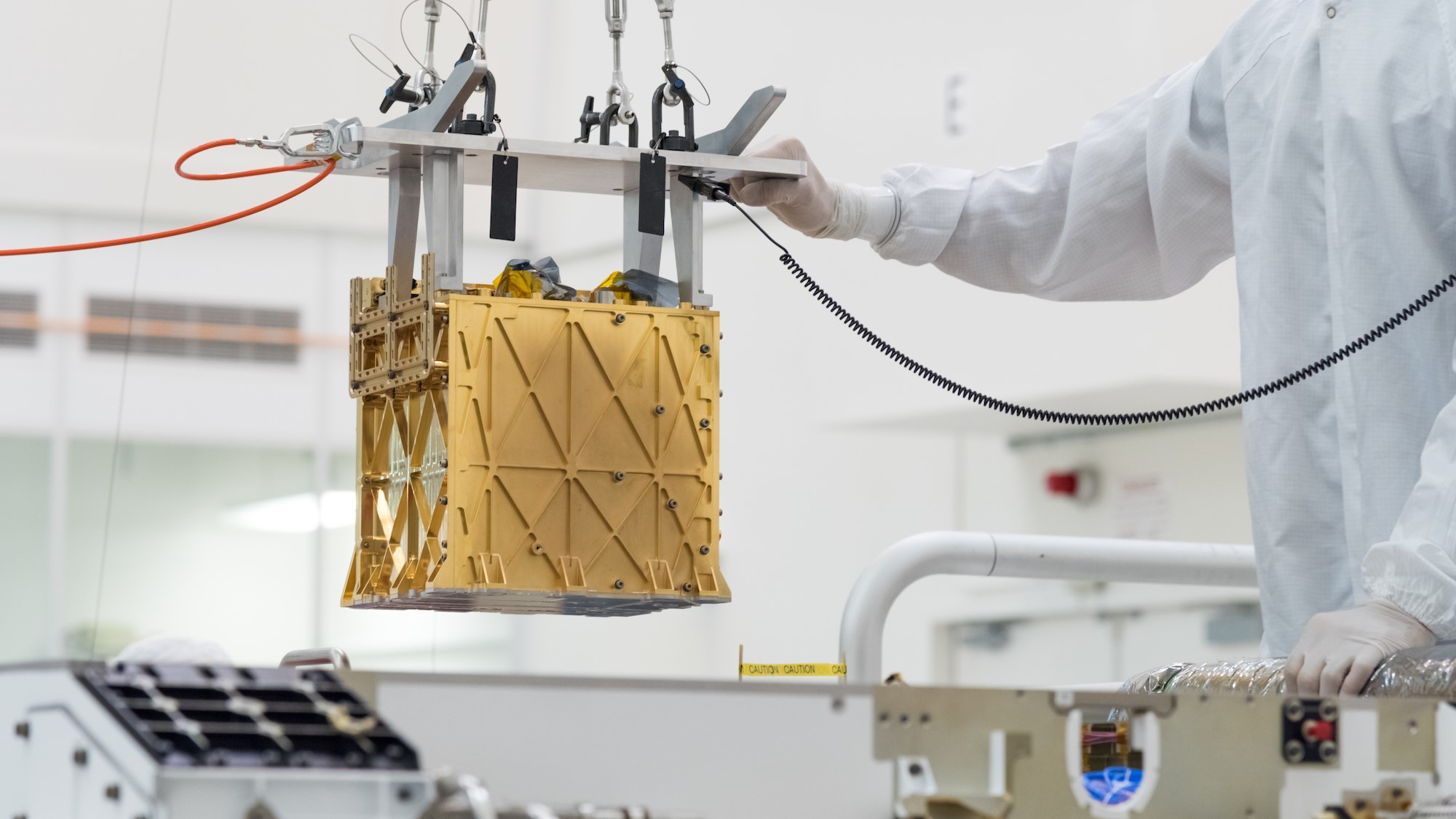After landing on the surface of Mars, NASA’s Perseverance rover took its first breath. Or rather, one of its instruments did.
Led by the Massachusetts Institute of Technology (MIT), the Mars Oxygen In-Situ Resource Utilization Experiment (MOXIE) is a small instrument on the Perseverance rover that’s designed to transform carbon dioxide, which comprises some 96% of the atmosphere on Mars, into breathable oxygen. Oxygen, of course, is crucial for a human mission to Mars. Since February 2021, the device has run seven times, each time producing about 0.2 ounces (6 grams) of oxygen per hour. That’s on par with the abilities of small trees here on Earth.
“This is the first demonstration of actually using resources on the surface of another planetary body, and transforming them chemically into something that would be useful for a human mission,” MOXIE deputy principal investigator Jeffrey Hoffman, a professor of the practice in MIT’s Department of Aeronautics and Astronautics and a former NASA astronaut, said in a statement. “It’s historic in that sense.”
Related: 12 amazing photos from the Perseverance rover’s 1st year on Mars
MOXIE has now operated in a variety of conditions on Mars, both day and night, through all four seasons. The researchers expect that a version of the instrument approximately 100 times larger than MOXIE could potentially create breathable oxygen for future astronauts who visit the Red Planet. If explorers can’t make their own oxygen on Mars, supplies from Earth would take up valuable mass on a spacecraft.
Furthermore, MOXIE’s products could also be used as an ingredient for rocket fuel — pretty crucial to ensuring the mission isn’t one-way. A rocket would need 33 to 50 tons (30 to 45 metric tons) of liquid oxygen propellant in order to launch humans off Mars.
“We have learned a tremendous amount that will inform future systems at a larger scale,” said Michael Hecht, principal investigator of the MOXIE mission at MIT’s Haystack Observatory.
The team’s research was published Wednesday (Aug. 31) in the journal Science Advances.
Follow Stefanie Waldek on Twitter @StefanieWaldek. Follow us on Twitter @Spacedotcom and on Facebook.

